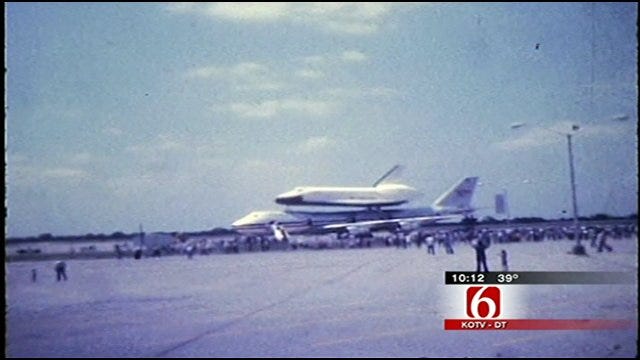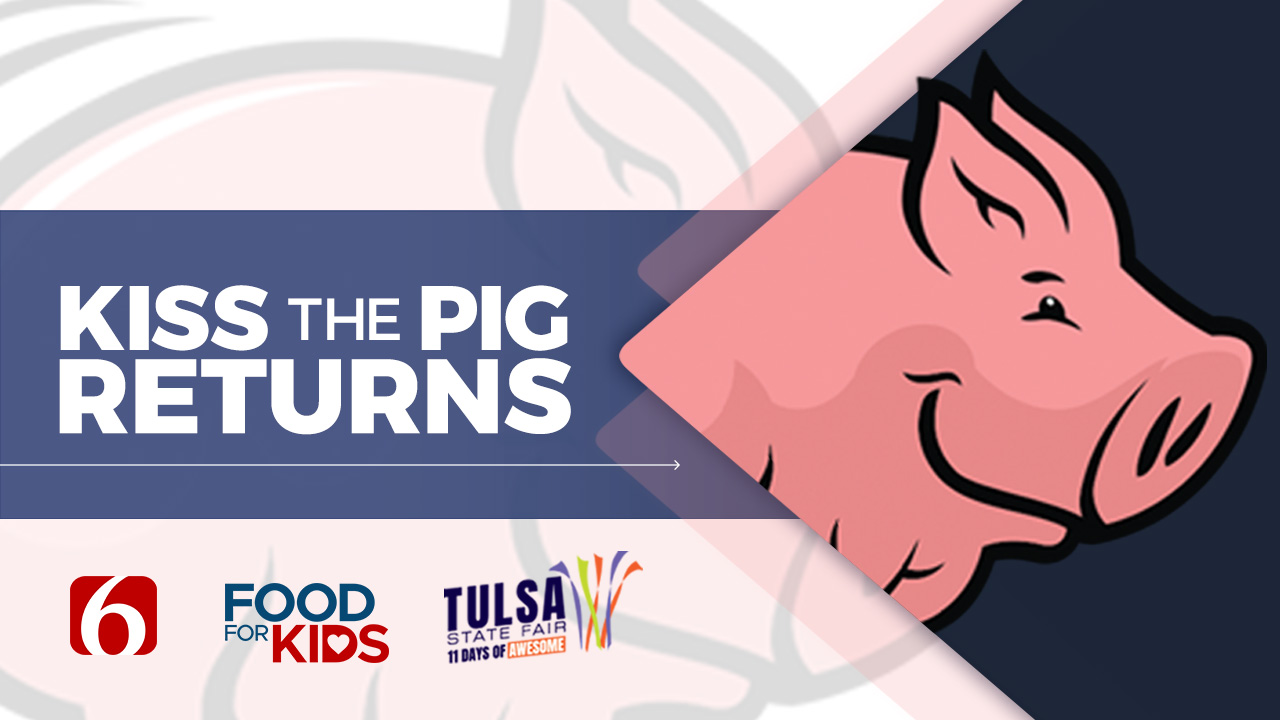Shuttle Launch Focuses Attention On Tulsa's Contributions To The Program
The launch of the space shuttle Discovery Thursday is focusing attention on Tulsa's contributions to the shuttle program, and on the effort to bring a shuttle to the city once the shuttle program ends. <br /><br /><a href="http://www.tulsaairandspacemuseum.org/index.php" target="_blank">Tulsa Air and Space Museum</a>Thursday, February 24th 2011, 4:10 pm
Scott Thompson, News On 6
TULSA, Oklahoma -- The world's most-traveled spaceship is on its final mission.
Shuttle Discovery launched Thursday afternoon on its 39th flight. It will drop off supplies and the first humanoid robot at the International Space Station.
Discovery, the oldest shuttle, has logged 143 million miles since its first flight in 1984.
NASA says the Shuttles are the most complex machines ever built.
No one ever expected the Shuttles to hold up as long as they have, except perhaps those at Tulsa Rockwell, who helped put them together and who still ride along on every mission.
These days, when Ron Bonsack peers into a camera, he sees the News On 6's Six In The Morning show on the other side, as a member of the production staff at KOTV.
But 32 years ago, when high school junior Ron Bonsack peered through a camera, he saw something completely different.
4/30/2010: Related story: News On 6 Employee Shares Rare Film Of Space Shuttle's First Tulsa Visit
"It was a perfect day, a few clouds, the sun was out, it was just a perfect day that day," he said.
Standing outside a fence at Tulsa International Airport with four buddies and the Kodak "Our Gang" Super-8 movie camera his mother had bought him a few years before, Ron captured the amazing sight that was this country's next step into space.
The Shuttle Enterprise, propped atop a 747 recently retired from American Airlines, coming to Tulsa so the folks at Rockwell who had a hand in building it could see what they'd created.
"You could see them walking around out there the people with American and Rockwell, people were in tears, they had no idea what they were working on," Ron said.
At the other end of the field, test pilot Bob Ferguson had positioned himself and his wind-up Nikon to capture the pictures both this day, and the next, when the Enterprise flew off for California.
"Oh, everybody was excited about it because America still was excited about space," Ferguson said.
The Enterprise was never meant to go into space. It was a test vehicle that allowed NASA to see how the design would work and for crews to practice on.
On that day in August, 1979, the last Apollo moon landing was seven years past.
The Shuttle program was the next step. A trucking service, really, meant to haul into low Earth orbit the parts of a new space station and the crews charged with putting them together.
At the giant Tulsa Rockwell plant, engineers who'd worked on the Mercury, Gemini and Apollo projects were now working overtime on the Shuttle.
"The dedication to quality and on-time delivery was unsurpassed," Dave Blankenship said.
Dave Blankenship held a number of executive roles at Tulsa-Rockwell through the years.
"The workforce out there took pride in their work, it wasn't just a paycheck. They really cared," he said.
The payload bay doors were Tulsa-Rockwell's biggest contribution to the six shuttles that were built.
Instead of aluminum, they were made of a new material, graphite epoxy, making them lighter and tougher.
JD Turner was one of those structural engineers told to come up with answers to problems that hadn't surfaced yet.
"I can say honestly that I don't know of a single structure that I was ever responsible for that failed," he said.
Francis Burke still has the reams of engineering stress tests he signed-off on. And a lingering pride in the role he and all the others in Tulsa played in the Shuttle program.
"Just feel like it's a part of me, I can't explain it any other way other than the fact that it was a part of myself and of course the thing is I got paid for doing it," he said, laughing.
As the Shuttle program winds down now, the Tulsa Air and Space Museum is hoping to land one of the remaining three vehicles for its permanent display.
It will cost tens of millions of dollars to land one, along with a costly expansion of the museum itself. Still, Tulsa has survived the first round of cuts.
"So there's a whole lot of politics, there's gonna be a whole lot of conversation between now and probably the end of summer as to who will receive those three Shuttles that are being decommissioned," Bob Ferguson said.
Bob Ferguson became a test pilot because he was captured by the excitement of America's space program.
As a volunteer at the TASM, he hopes to inspire some of that wonder in another generation. He's not so sure he's getting through.
"People do not understand the amount of return they've received from the space program, it's absolutely incredible for every dollar we ever spent out there we got 7 dollars worth back," he said.
It was never about dollar signs for the men who built part of the Shuttle in Tulsa, and those they inspired. It was about American ingenuity.
"I think we should keep going, I really do," Ron said.
American brain power.
"Well, we did it," Turner said.
And the American spirit of dreaming big dreams.
"Pride, accomplishment, Blankenship said. "Same thing as when I see the flag wave."
There are two more Shuttle missions planned, the last lifting off in late June. After that, the United States will have to rely on the Russians to get us into space until we come up with another way to get there ourselves.
More Like This
February 24th, 2011
January 2nd, 2025
September 29th, 2024
September 17th, 2024
Top Headlines
January 7th, 2025
January 7th, 2025
January 7th, 2025














